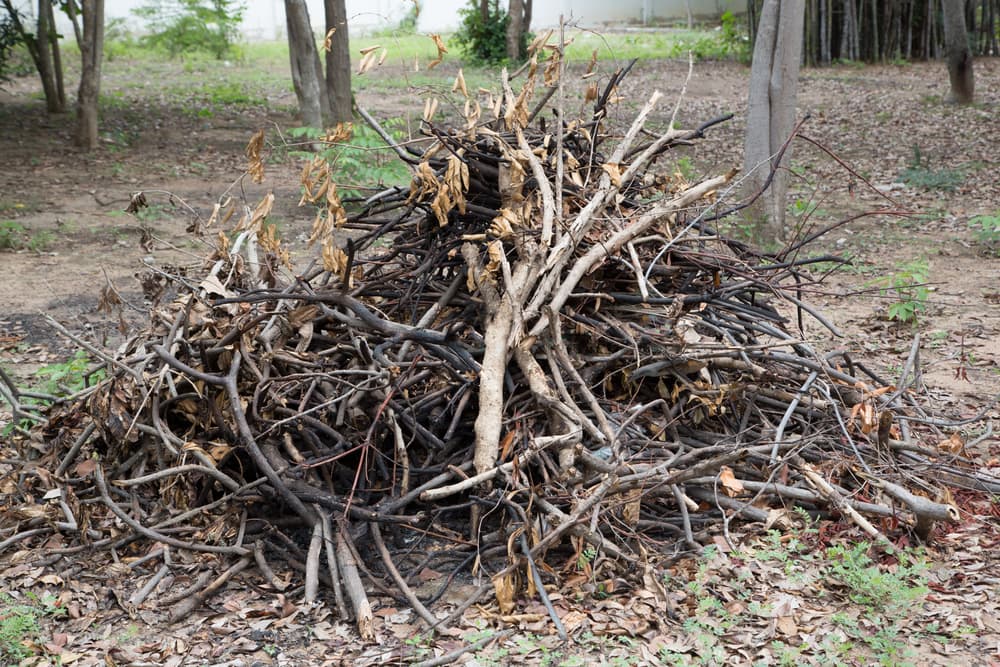We Interviewed Garden Designers For Their 20 Top Wildlife Garden Ideas


Elizabeth is a Permaculture Garden Designer, Sustainability Consultant and Professional Writer, working as an advocate for positive change. She graduated from the University of St. Andrews with an MA in English and Philosophy and obtained a Diploma in Applied Permaculture Design from the Permaculture Association.
Reviewed By PETER LICKORISH

Peter is a Horticulture Lecturer and self-employed Horticulturist, with a passion for diverse areas of the industry - from garden design to the science behind plant growth and propagation. He has completed the Royal Horticultural Society’s Master of Horticulture (MHort) Award and lectures on RHS courses at Bedford College.
Contributions From DANNY CLARKE

Danny Clarke ('The Black Gardener') is a British Horticulturist and Garden Designer. He is probably best known for his TV presenting roles on the BBC's Instant Gardener, his time on the ITV This Morning team and Filthy Garden SOS aired on Channel 5. He also co-directs CIC Grow 2 Know, a charitable organisation encouraging diversity in horticulture.

Known online as 'The Plant Rescuer' and having published a book with the same name, Sarah is a houseplant enthusiast with a passion and skill for reviving imperfect plants. She has an online following of almost 300,000 people and won a Gold Medal at the 2022 RHS Chelsea Flower Show.

Sally Flatman is the host and creator of the 'Our Plant Stories' podcast. She is a former BBC Radio producer and has received an RHS Level 2 Certificate in the Principles of Horticulture from Capel Manor College.

Alan Titchmarsh is a Broadcaster, Author and renowned Horticulturist with 50 years of industry experience. He is recognisable from several TV shows, including Ground Force, Love Your Garden and Britain’s Best Gardens - and written many books, including The Gardener’s Almanac and My Secret Garden. Alan studied at Hertfordshire College of Agriculture and Kew Royal Botanic Gardens.

Dave Goulson is the Professor of Biology at the University of Sussex and a specialist in the Ecology & Conservation of bees and other insects. He founded the charity the Bumblebee Conservation Trust in 2016 - which now has over 12,000 members - and he is the Director of The Buzz Club. Dave has published more than 300 scientific articles and several books on ecology and insect conservation, including Gardening For Bumblebees.

Naomi Slade is a Gardener, Author and Consultant with 25 years’ experience in writing. Naomi has published several books, presented on mainstream TV shows and written for various gardening publications. In 2022 she won the Garden Media Guild’s Best Practical Journalist Of The Year award.

Debi Holland is a Writer for publications including BBC Countryfile and Garden News magazine and runs her own Garden Maintenance business. She was an Ambassador for the RHS campaign 'Inspiring the Future' and has a Diploma in Horticulture from Bristol Botanic Gardens. Debi is also a member of the Garden Media Guild.

Neil Lucas in a leading expert on ornamental grasses and the Director and Owner of Knoll Gardens, based in Dorset. He is also a Council Member for the RHS and has won 10 Gold Medal awards at RHS Shows, including the Chelsea Flower Show. Neil has written two books on grasses and their uses in the garden, including Designing With Grasses.

Sam Hickmott is the National Trust’s youngest Head Gardener at two gardens: Lytes Cary Manor & Tintinhull, both in Somerset. He received his RHS Level 2 qualification at 17 and worked as an acting Head Gardener at Prior Park in Bath before his new appointments. Sam also received his RHS Level 3 qualification in 2021.

After establishing Common Farm Flowers with her husband in 2010, Georgie Newbery has become one of the UK’s most reputable flower farmers. Georgie runs workshops when she isn’t busy arranging floral bouquets and also regularly shares tutorials on YouTube. She is also the Author of several books, including The Flower Farmer’s Year and Grow Your Own Wedding Flowers.
IN THIS GUIDE
- 1) Create A Wildlife Pond
- 2) Make A Bog Garden / Wetland Area
- 3) Make A Rain Garden
- 4) Landscape To Protect The Soil
- 5) Plant A Wildflower Meadow
- 6) Plant Fruit Trees
- 7) Plant Other Native Trees
- 8) Establish A Forest Garden
- 9) Make New No-Dig Garden Beds
- 10) Companion Plant Annual Crops With Flowers & Herbs
- 11) Create A Perennial Bed Or Border
- 12) Plant A Mixed Native Hedgerow
- 13) Clad Walls Or Fences With Perennial Climbers
- 14) Choose Living Roofs For Sheds & Other Structures
- 15) Create A Stump Garden
- 16) Create A Rockery
- 17) Leave Some Weeds For Wildlife
- 18) Make A Log Or Brush Pile (Or Dead Hedge)
- 19) Add Nesting Boxes & Wildlife ‘Hotels’
- 20) Add Feeders In Your Garden
- References
Creating a wildlife garden is a great eco-friendly project for you and your family.
There is plenty that you can do to benefit nature and attract and aid wildlife in your garden. And remember, what benefits wildlife also benefits you, as a gardener.
The more biodiversity you can bring to your space, the more vibrant and resilient it will be.
“There are many ways gardeners can help care for the environment and have the climate in mind,” says Hannah Reid, Garden Writer and Blogger.
Wildlife is endangered by human activity. But we humans can also do a lot to reduce biodiversity losses and to help make our environments better places for wildlife to be, and better spaces for us.
An attractive garden is pleasing to the eye, but for me it is missing something unless it is also effervescent with wildlife constantly using the space.
Peter Lickorish MHort (RHS) – Horticulturist
My absolute favourite wildlife to see in my garden is goldfinches feeding on seed heads of lemon balm, Melissa officinalis, especially in winter.
Our gardens can be such a sanctuary – and not a sacrifice – for wildlife. They enrich the space.
Here are 20 wildlife garden ideas to benefit nature, help wildlife, and create thriving and productive spaces that provide for you, your family, and all the life which shares your space.
1) Create A Wildlife Pond

One of the very best things you can do in a wildlife garden is to create a wildlife pond.1The value of ponds for wildlife. (n.d.). Flagship Ponds. Retrieved March 27, 2023, from https://freshwaterhabitats.org.uk/wp-content/uploads/2015/10/The-value-of-ponds-for-wildlife-NEW.pdf
Wildlife ponds are a year-round source of water for wildlife to drink or bathe in, and also provide a habitat for a range of aquatic and amphibious creatures.
Ponds attract and benefit many animals, boosting biodiversity. They are also extremely attractive and can help make your garden a relaxing place to be.
“An obvious way to help wildlife is to add water features, even tiny ponds or baths, to your spaces,” shares Dave Goulson, Bee Ecologist & Conservationist.
“It’s amazing how much wildlife some water will provide for.”
By planting up a wildlife pond with a range of aquatic and marginal plants, you can create a thriving ecosystem that supports a wide variety of life, including slug-eating frogs.
“A good balance is for half the surface to be vegetation, and half water,” according to Horticulturist Peter Lickorish.
Ponds should ideally be at least two feet deep in the middle, with a shallow beach area at one side to allow wildlife to get in and out easily.
But in tiny gardens, even an old washing up bowl or barrel placed in the ground can be better than no pond at all, as Manoj Maldé, award-winning garden designer, explains:
“Fill a bowl with water, leave it in your garden and watch how it attracts wildlife. I do this in my garden and it attracts birds, bees, butterflies and other insects.
“Using ways of inviting beneficial wildlife into the garden will help to keep control of the bad insects you don’t want.
“In turn, you may be able to reduce your use of artificial insecticides which will have a positive knock-on effect of reduction in plastic containers and packaging – and it helps to save a few pennies.”
“Very shallow areas of water – even a saucer – can be great for bees and other insects, as well as birds, to drink from…or watch them drink from water droplets on plants like Alchemilla,” adds Peter.
“I bought a water bath for the first time this year and I’ve spotted my first frog, which is exciting,” shares Gardener Sally Flatman.
2) Make A Bog Garden / Wetland Area

To make a watery area of your garden even better for wildlife, you could also consider creating a bog garden or a small wetland area adjacent to a pond, or in a naturally boggy and waterlogged spot on your property.
Wetland ecosystems are one of the most biodiverse ecosystems on earth.2What is biodiversity and why do we need it? (2020, June 13). WWT. Retrieved March 27, 2023, from https://www.wwt.org.uk/news-and-stories/blog/what-is-biodiversity-and-why-do-we-need-it/
Even a small area of bog garden or wetland in your garden could boost biodiversity considerably, and be a boon to a range of different wildlife, including bees – if planted with plants such as marsh marigold, Caltha palustris.
“By incorporating water into the garden, from a small half-barrel pond to an enormous lake, we can provide a home for so much more wildlife, with the added benefit of attracting slug-hungry predators like frogs, as well as creating opportunities for different types of ornamental planting,” adds Sam Hickmott, a Horticulturist.
3) Make A Rain Garden

Staying with the water theme, another great wildlife garden idea involves finding ways to catch rainwater in your garden and keep it around.
There are a great many benefits to making a rain garden, which will catch rainfall runoff from a roof or driveway.
One of the benefits is that the moist soil and rich planting within it can be great for wildlife.3Rain Gardens: A Way to Improve Water Quality. (2016, November 28). Center for Agriculture, Food, and the Environment. Retrieved March 27, 2023, from https://ag.umass.edu/landscape/fact-sheets/rain-gardens-way-to-improve-water-quality
The idea is that water from gutters or hard surfaces are directed into a basin or dip created in the soil, which is filled with organic material and planted up with plants that tolerate periods of wet and periods of dry conditions.
This feature can be a habitat for a range of species, and if you choose the right plants, can provide wildlife with food and other resources too.
Plant up a rain garden with native plants and it can catch and store far more water than a boring lawn, and will also bring much more life to your garden.
4) Landscape To Protect The Soil

Another way to catch rainwater and keep it around in your garden is to create on-contour swales (ditches) on a gentle slope.
Adding swales and berms on their downward side, and planting up the berms with plenty of useful and attractive plants will keep water around, aiding soil life and a range of other wildlife too.4Engels, J. (2015, August 25). Using Swales to Your Advantage: How to Water Your Garden With the Power of Nature. One Green Planet. Retrieved March 27, 2023, from https://www.onegreenplanet.org/lifestyle/permaculture-magic-why-swales-are-swell-for-the-garden/
Taking care of the soil is very important in a wildlife garden because much of the wildlife we most wish to attract is part of the ecosystem of healthy soil.5Saving Our Soils. (2021). Soil Association. Retrieved March 27, 2023, from https://www.soilassociation.org/media/24941/saving-our-soils-report-dec21.pdf
“Stop using chemicals and start letting nature achieve her own balance,” shares Gardener Alan Titchmarsh.
When trying to attract wildlife to your garden, do not forget the wildlife which we cannot usually see, which lives and works below the soil surface.
Terracing can also work well on steeper slopes to prevent runoff and erosion.
5) Plant A Wildflower Meadow

One of the most obvious types of wildlife we wish to attract in a wildlife garden are pollinators.
Bees and a range of other insects play crucial roles in plant pollination and we want plenty of them around.
One of the wonderful ways to attract pollinators to your garden is to create a wildflower meadow.6Forest Research. (2022b, February 9). Wildflower meadow habitats. Retrieved March 27, 2023, from https://www.forestresearch.gov.uk/tools-and-resources/fthr/urban-regeneration-and-greenspace-partnership/greenspace-in-practice/benefits-of-greenspace/wildflower-meadow-habitats/
Getting rid of a boring, mowed grass lawn is another of the best things you can do for wildlife in your garden.
“Don’t be too tidy. I’m not saying your garden has to look a mess, but endless deadheading, mowing and tidying away is getting rid of a little bit of habitat for wildlife every time,” Dave says.
“Leave herbaceous plants up throughout the winter and don’t chop them back until the spring. It’s a really easy thing to do, as loads of insects spend their winters sitting on those dead stalks and flower heads.”
Replacing it with an infrequently mowed perennial or annual wildflower meadow is one excellent way to go.
“Plant some native wildflowers in a little patch,” adds Dave.
“It doesn’t have to be big. We asked members of The Buzz Club to grow a 2x2m patch and then count the insects they saw, and the results were amazing.
“There were hundreds of insects from dozens of different species attracted to these patches, so you don’t need lots of space.”
Be sure to think about where you live, the microclimate and soil, and choose a wildflower or meadow mix which is suitable for your area and location.
“Many meadow plants prefer relatively poor soil, so this is no barrier to starting one,” says Peter Lickorish.
“In fact, suppressing lush grass can be a challenge, so consider adding plants which can help achieve this – including Rhinanthus minor, yellow rattle.”
6) Plant Fruit Trees

Just a few fruit trees in blossom can provide a huge amount of nectar for bees and other pollinators.
The fruit which you do not manage to harvest, and that which falls from the tree, will also be appreciated by butterflies and other wildlife later in the year.7Benefits of orchards and fruit growing. (2017, May 22). The Orchard Project. Retrieved March 27, 2023, from https://www.theorchardproject.org.uk/guides_and_advice/benefits-of-orchards-and-fruit-growing/
Fruit trees also provide for wildlife in many other ways too – feeding a whole host of creatures, and giving a range of wildlife shelter or a place to live.
“As an example, ladybirds love gobbling up any aphids on fruit trees,” says Peter.
And that is before you even begin to consider the benefits they can bring for you and your family.
Even in tiny gardens, there is space for a small fruit tree. You can grow cordon varieties up against a fence, or even grow patio fruit trees in pots.
Almost anyone can place a fruit tree in their garden.
7) Plant Other Native Trees

If you have a larger garden, then of course fruit trees are not the only trees to consider.
Planting other trees is another of the best things you can do for wildlife in your area.
Choosing native trees means you can benefit a huge range of native wildlife, which has evolved alongside these species and works symbiotically with native plants in a range of different ways.8Why are Trees Important for Biodiversity? (n.d.). Woodland Trust. Retrieved March 27, 2023, from https://www.woodlandtrust.org.uk/trees-woods-and-wildlife/british-trees/why-trees-are-important-for-biodiversity/
Even a single tree can make a big difference to the biodiversity in your garden, and can enrich your own life too, in so many different ways.
In somewhat smaller gardens, native trees can be coppiced to keep them small, which also helps create habitat and other benefits for a range of creatures.
8) Establish A Forest Garden

If you really want to do as much as you can for wildlife in your garden, then you can think beyond tree planting and think about creating thriving, productive and resilient ecosystems to feed you, and many other creatures with whom you share your space.9Key benefits of forest gardens. (n.d.). National Forest Gardening Scheme. Retrieved March 27, 2023, from https://nationalforestgardening.org/benefits-of-forest-gardens/key-benefits/
Establish a forest garden, also known as a food forest or edible woodland garden and watch the wildlife arrive.
A forest garden is a wildlife-friendly way to grow your own food, and creates a much more low maintenance food-producing system than annual beds.
A forest garden has layered planting – with trees, shrubs, climbers, herbaceous perennials, self-seeding annuals/biennials, and more which work together in many ways with each other, and with wildlife in the space.
Not all are edible, but all contribute to the system as a whole.
“Having a mix of plants is really great,” shares Grass Expert Neil Lucas.
“Growing for pollinators is good, but growing for diversity is better because you get such a wide range of plants that appeal to all sorts of wildlife.”
9) Make New No-Dig Garden Beds

If you are still interested in annual food production, then in a wildlife-friendly garden, you will want to make sure that your efforts to grow your own do not conflict with the nature in your garden.
In a no-dig garden, you will work to protect the soil and the life it contains, and as mentioned above, this is always great for garden biodiversity.
“By disengaging from the ground and not hoeing, digging or weeding, you’re allowing all sorts of invertebrates to start making a home there,” shares Neil.
When making new no-dig garden beds, the idea is to disturb the existing soil as little as possible.
“Many organisms are happy at a particular soil depth and soil disturbance could put them somewhere they don’t want to be,” says Peter.
Rather than digging new beds, you will make new beds by layering organic material on top of the soil surface. Weeds can be suppressed under layers of cardboard.
No-dig garden beds like lasagna gardens and hugelkultur mounds allow a wide range of soil life to thrive.10The Many Benefits of Hugelkultur. (2023, March 27). Permaculture. Retrieved March 27, 2023, from https://www.permaculture.co.uk/articles/the-many-benefits-of-hugelkultur/
10) Companion Plant Annual Crops With Flowers & Herbs

Once you have made your new no-dig beds, you also need to think about what you plant in them.
In a wildlife garden, companion planting annual crops is key.
Rather than, for example, just growing cabbages in one bed and carrots in another, you should create vibrant and diverse polycultures, with a range of plants growing in each bed which benefit one another.
“Have permaculture at the front of your mind and plant a diverse range of plants in the garden,” says Hannah.
“This will help to attract pollinators too, which is both great for the environment and vegetable growers, as it’s the pollinators that mean we get to harvest veggies!”
As Hannah explains, incorporating plenty of flowers and herbs as companion plants around and between your main crops can bring more beneficial wildlife to your garden: wildlife that will pollinate your crops, and help, through predation, to keep pest numbers down.11Riesselman, L. (2010, January 1). Companion Planting: A Method for Sustainable Pest Control. Iowa State University. Retrieved March 27, 2023, from https://dr.lib.iastate.edu/entities/publication/3958510b-6314-4800-9ded-88cf9d4cbca2
“Plants such as the French marigold, Tagetes patula, can deter whitefly from tomatoes,” adds Peter Lickorish.
Remember to garden organically at all times in order to make sure you keep safe the wildlife that you attract.
11) Create A Perennial Bed Or Border

As well as thinking about annual production when growing your own, it is important to consider perennial production too.
Fruit trees, shrubs and other perennial plants can, as mentioned above, be included in a forest garden type area.
But perennial beds or borders filled with perennial flowers, vegetables and herbs can also be great for a wildlife garden.
With herbaceous perennials, leaving plant stems and seed heads in place over the autumn and winter months can provide a haven for a range of wildlife, with plenty of shelter, and food sources too.
“The stems of Turkish sage, Phlomis russeliana, can be very elegant if left over winter,” advises Peter.
A herbaceous border is another great feature for a wildlife-friendly garden.
12) Plant A Mixed Native Hedgerow

Hedges can also be a place where wildlife can thrive, especially if, instead of creating a neat, single species hedge, you plant a mixed hedgerow with a variety of native or mostly native plants.
“Buy plants from UK growers to minimise transportation emissions, don’t use pesticides and don’t buy a plant and expect it to survive without first doing a little bit of research into its care requirements,” says Sarah Gerrard-Jones, when asked about the best ways to help nature.
“The most sustainable thing you can do is keep a native plant alive!”
There are many great species for a mixed hedgerow – from wild fruits like blackthorn/sloe, bullace/wild plum, bird cherry/gean, and elder, to hazel, hawthorn, hornbeam, holly, native roses, guelder rose and more.
Hedgerows can be placed along a garden boundary, but might also be imaginatively used to separate zones of your garden into different garden rooms.
Hedgerows can be nesting sites, provide shelter for many creatures, and, of course, can also provide food, for the wildlife and for you.
13) Clad Walls Or Fences With Perennial Climbers

Where gardens are surrounded by walls or fences, these will obviously not be as attractive for wildlife, and can in fact block wildlife from your garden.
To make your fences or walls more biodiverse (and attractive) consider cladding them with perennial climbers. Ivy, honeysuckle, and other climbers are also great for wildlife throughout the year.
In addition, if you have a solid boundary around your garden, think about making holes which can be used as wildlife corridors by hedgehogs and other wonderful garden wildlife.
Do not accidentally exclude wildlife from your garden with barriers that certain creatures cannot breach.
14) Choose Living Roofs For Sheds & Other Structures

One of the key things in a wildlife garden is to make sure that you include as much plant life, and as varied a selection of plants, as possible.
Planting where plants would not typically be found is one great way to cram more plants into your garden.
One example of this is choosing living roofs, or green roofs for sheds and other structures in your garden.
Sedums, grasses and meadow flowers, and a number of other plants can make great roof covering and are a boon for bees and other pollinators.12Green roofs / RHS Gardening. (n.d.). Royal Horticultural Society. https://www.rhs.org.uk/garden-features/green-roofs
15) Create A Stump Garden

Another key concept behind a wildlife garden involves creating as many different ecosystem niches and different habitats as possible.
One cool idea for a wildlife garden is a stump garden, or stumpery. This involves creating a garden around dead and decomposing tree stumps, logs and branches.
“If a branch has fallen from your tree, don’t discard it,” shares Danny Clarke, a Garden Designer and Horticulturist who is also known as The Black Gardener.
“Put it in a bed and make a little stumpery out of it. Plant some ferns or hostas around it.
“Wildlife will benefit from these simple ideas. Eventually, that wood will decay and enrich the soil and from that enrichment, new plants will grow.”
Stump gardens are wonderful for solitary bees, beetles, woodlice, toads, small mammals and more.
They are a wonderful wildlife habitat which can work very well in a shaded or partially shaded spot.
“I put log piles with soil in my space and they become hotels in the corners of our gardens” shares Neil.
Adding ferns and woodland plants contrasts well with the stumps.
16) Create A Rockery

Placing rocks and stones in a garden bed to create a rockery is another way to create different habitats for a range of wildlife.
Rockeries can be beautiful garden features, and can attract a range of different creatures to the space.
Rockeries will typically have plenty of nooks and crannies for wildlife to hide in, and butterflies and perhaps even lizards will enjoy sunning themselves on flat rock surfaces.
Fill your rockery with flowering alpine plants and pollinators will also benefit throughout the year.
17) Leave Some Weeds For Wildlife

“Every year I take part in Plantlife’s No Mow May but I also carry it on through Let It Bloom June and Knee High July,” shares Debi Holland.
“Our urban front lawn is a dream, filled with ox-eye daisies and the buzz of pollinators. Other than mowing a path around the edge nature is allowed to run wild and the local insects seem very happy.”
As explained above, in a wildlife garden, it is never a good idea to be too zealous in weed removal. Campaigns such as No Mow May encourage the unchecked growth of plants commonly considered weeds, which are highly beneficial to garden wildlife.13Ways to support us. (n.d.-b). National Trust. Retrieved March 27, 2023, from https://www.nationaltrust.org.uk/support-us
“You should listen to your garden and watch what is does, as opposed to trying to make it do what you want it to do,” shares Sally.
“I think that comes back to letting plants, even weeds, go to seed when they want to.”
Of course, you may not want weeds in your main growing areas, but it is a good idea to leave some wilder corners in your space where weeds and native wildflowers can thrive.
“Nature is important and we need to learn to co-exist with it,” shares Danny.
“Birds, bees and butterflies are not interested in whether a garden is tidy or not.
“They’re just interested in whether they can get food or shelter, so we need to consider them first.
“It’s all about being part of this big cycle and working with it, not against it. If we work against it, we do it to our detriment.”
Creating a nettle patch, perhaps, or letting plants like dandelions pop up in a lawn or pathways can be great for a range of insects and other wildlife in your garden.
And remember, many weeds can actually be very useful for us too, in a range of ways.14Hillocks, R. (1997). The potential benefits of weeds with reference to small holder agriculture in Africa. Integrated Pest Management. Retrieved March 27, 2023, from https://www2.hawaii.edu/~theodore/Images/weeds_as_resources_africa.pdf
“Don’t see your garden as a battleground,” adds Sally.
“Once you relax about that and stop trying to control every element of your garden, more wildlife will creep in.”
18) Make A Log Or Brush Pile (Or Dead Hedge)

Not being too tidy in a garden is key to wildlife attraction.
“A pile of logs and twigs will provide cover for beetles to live,” shares Georgie Newbery, a Flower Farmer.
“Beetles eat slugs. Hedgehogs eat beetles. We need room for the whole foot chain if we are to allow ecosystems to flourish.”
As well as leaving some weeds to thrive in wilder corners of the space, you should also make sure that you leave some dead and decaying organic woody material lying around.
You can pile branches, leaves and other organic debris in a pile in a corner of your garden, or make a dead hedge by piling such material between two rows of posts stuck in the ground.
“Leaving dense twigs and foliage will create nesting and hibernating spaces,” shares Author Naomi Slade.
“It is really important to provide insect larvae with food sources, whether it is rotting wood or plant material, as otherwise, there can be no adults.”
The materials will provide a home for a range of wildlife, and enrich and improve the soil as they slowly break down.15Schalau, J. (2019, June 26). Brush Piles Benefit Wildlife. Backyard Gardener. Retrieved March 27, 2023, from https://cals.arizona.edu/yavapai/anr/hort/byg/archive/brushpiles.html
“Stacking or laying material in strata – lining it up in layers facing the same direction – can make them appear more ornamental,” according to Peter Lickorish.
“The prevailing wind generally blows branches down in the same direction, so you can mimic this.”
The USDA suggests that one brush pile every 2-300 feet should provide adequate cover and travel lanes between food sources for most species.
19) Add Nesting Boxes & Wildlife ‘Hotels’

The best ideas for a wildlife garden always involve thinking about the diverse plants that you choose, how they can be combined, and how you can create natural habitats for as many creatures as possible.
But in small gardens, you might not have the space to create as many natural habitats as you might wish. This is where nesting boxes and wildlife ‘hotels’ can come in.
Adding bird boxes, bat boxes, squirrel boxes, bee hotels and other similar features can ensure you have space for wildlife when you cannot provide more natural accommodation options.
Every creature that visits your garden should be able to find a home when you add fun features of this kind to your space.
A mixture of materials, including tiles and logs with drilled holes, could be packed into a steel gabion, for example.
Just make sure that you understand the best placement for each of the different features of this kind that you add, so the options are suitable for the creatures you wish to attract.
20) Add Feeders In Your Garden

Again, remember that adding natural food sources through the right plant choices is most important.
Adding plenty of seeding plants and berry-producing trees and bushes, and ensuring plenty of insect life is around, are the best ways to make sure there is food for all in a wildlife garden.
But there are still times when it can be helpful to supplement the wild diet of the creatures in your garden with additional food. A range of garden birds, for example, will benefit from additional food in winter, when there is less wild food around.
Research from the British Trust for Ornithology in 2019 suggested that bird feeding has helped to support the populations of many bird species in the UK.16Boom time at Britain’s bird feeders. (2019, May 21). BTO – British Trust for Ornithology. Retrieved March 27, 2023, from https://www.bto.org/press-releases/boom-time-britains-bird-feeders
Choosing and positioning the right feeders for different birds and other creatures is one more idea that can be beneficial in a wildlife garden.
These are, of course, just some of the things you can do to create a wonderful wildlife garden. But these ideas should provide you with a good idea of where to start.
References
- 1The value of ponds for wildlife. (n.d.). Flagship Ponds. Retrieved March 27, 2023, from https://freshwaterhabitats.org.uk/wp-content/uploads/2015/10/The-value-of-ponds-for-wildlife-NEW.pdf
- 2What is biodiversity and why do we need it? (2020, June 13). WWT. Retrieved March 27, 2023, from https://www.wwt.org.uk/news-and-stories/blog/what-is-biodiversity-and-why-do-we-need-it/
- 3Rain Gardens: A Way to Improve Water Quality. (2016, November 28). Center for Agriculture, Food, and the Environment. Retrieved March 27, 2023, from https://ag.umass.edu/landscape/fact-sheets/rain-gardens-way-to-improve-water-quality
- 4Engels, J. (2015, August 25). Using Swales to Your Advantage: How to Water Your Garden With the Power of Nature. One Green Planet. Retrieved March 27, 2023, from https://www.onegreenplanet.org/lifestyle/permaculture-magic-why-swales-are-swell-for-the-garden/
- 5Saving Our Soils. (2021). Soil Association. Retrieved March 27, 2023, from https://www.soilassociation.org/media/24941/saving-our-soils-report-dec21.pdf
- 6Forest Research. (2022b, February 9). Wildflower meadow habitats. Retrieved March 27, 2023, from https://www.forestresearch.gov.uk/tools-and-resources/fthr/urban-regeneration-and-greenspace-partnership/greenspace-in-practice/benefits-of-greenspace/wildflower-meadow-habitats/
- 7Benefits of orchards and fruit growing. (2017, May 22). The Orchard Project. Retrieved March 27, 2023, from https://www.theorchardproject.org.uk/guides_and_advice/benefits-of-orchards-and-fruit-growing/
- 8Why are Trees Important for Biodiversity? (n.d.). Woodland Trust. Retrieved March 27, 2023, from https://www.woodlandtrust.org.uk/trees-woods-and-wildlife/british-trees/why-trees-are-important-for-biodiversity/
- 9Key benefits of forest gardens. (n.d.). National Forest Gardening Scheme. Retrieved March 27, 2023, from https://nationalforestgardening.org/benefits-of-forest-gardens/key-benefits/
- 10The Many Benefits of Hugelkultur. (2023, March 27). Permaculture. Retrieved March 27, 2023, from https://www.permaculture.co.uk/articles/the-many-benefits-of-hugelkultur/
- 11Riesselman, L. (2010, January 1). Companion Planting: A Method for Sustainable Pest Control. Iowa State University. Retrieved March 27, 2023, from https://dr.lib.iastate.edu/entities/publication/3958510b-6314-4800-9ded-88cf9d4cbca2
- 12Green roofs / RHS Gardening. (n.d.). Royal Horticultural Society. https://www.rhs.org.uk/garden-features/green-roofs
- 13Ways to support us. (n.d.-b). National Trust. Retrieved March 27, 2023, from https://www.nationaltrust.org.uk/support-us
- 14Hillocks, R. (1997). The potential benefits of weeds with reference to small holder agriculture in Africa. Integrated Pest Management. Retrieved March 27, 2023, from https://www2.hawaii.edu/~theodore/Images/weeds_as_resources_africa.pdf
- 15Schalau, J. (2019, June 26). Brush Piles Benefit Wildlife. Backyard Gardener. Retrieved March 27, 2023, from https://cals.arizona.edu/yavapai/anr/hort/byg/archive/brushpiles.html
- 16Boom time at Britain’s bird feeders. (2019, May 21). BTO – British Trust for Ornithology. Retrieved March 27, 2023, from https://www.bto.org/press-releases/boom-time-britains-bird-feeders


